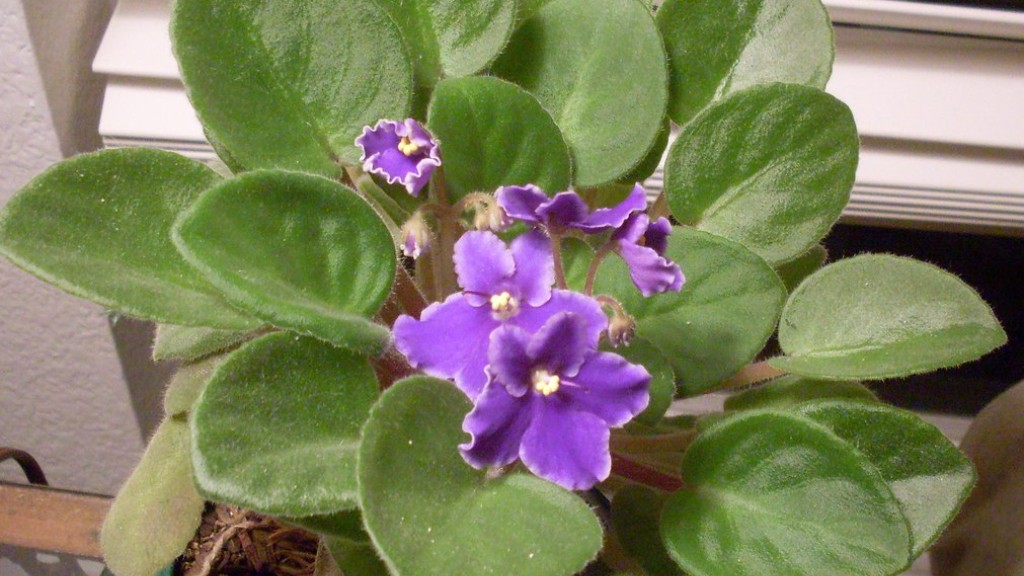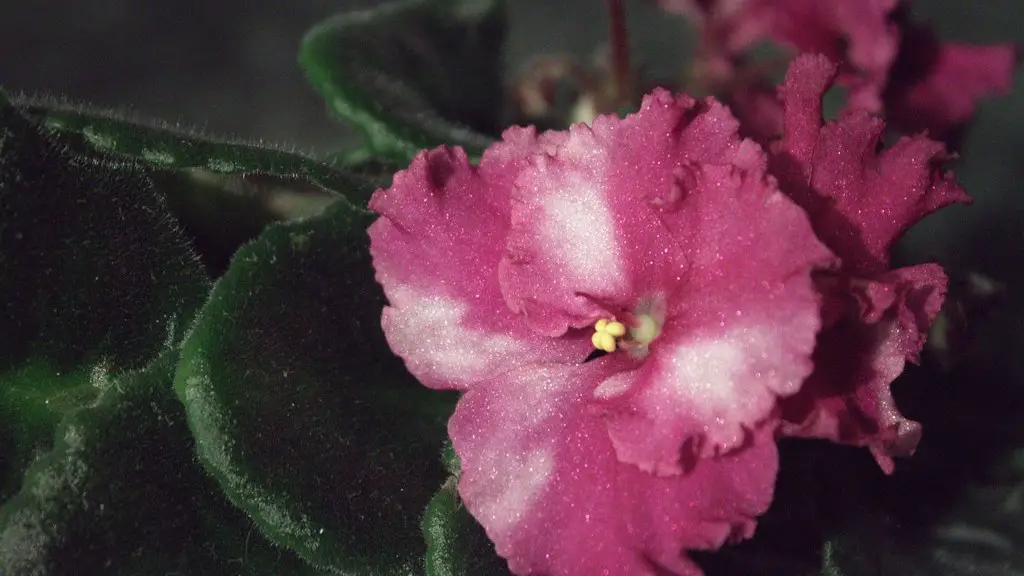African Violets are a type of plant that can bloom in low light. They are known for their ability to thrive in difficult conditions. African Violets are native to the eastern and central regions of Africa.
Generally, African violets need bright light to bloom well, but they will still bloom in lower light conditions.
Do African violets do well in low light?
If you want your African violet to thrive and produce an abundance of flowers, make sure it gets plenty of indirect light. Without enough light, the leaves will become darker green and thinner, and the stems will be weak. African violets can be easily grown under artificial lights, so if natural light is lacking, don’t hesitate to use a grow light.
If you want your African violets to produce flowers, you need to make sure they get at least eight hours of darkness each day. The best way to do this is to use grow lights and set a timer so that the lights are on for 14 hours and off for 10 hours each day.
How do I force my African violet to bloom
If you want your African Violet to bloom again, there are a few things you can do:
1. Let there be light – African Violets need bright, indirect light in order to bloom. If your plant is not getting enough light, it may stop blooming.
2. Turn up the humidity – African Violets like humid conditions. You can increase the humidity around your plant by misting it regularly or placing it on a pebble tray.
3. Replenish essential nutrients – African Violets need nutrients like nitrogen, phosphorus, and potassium in order to bloom. You can replenish these nutrients by feeding your plant with a special African Violet fertilizer.
4. Keep it pleasant – African Violets like moderate temperatures and will stop blooming if it gets too hot or too cold. Keep your plant in a spot that is between 60-80 degrees Fahrenheit.
5. Choose the right soil – African Violets need a light, well-draining soil. If your plant is in heavy soil, it may not bloom.
6. Protect from pests & disease – Pests and diseases can prevent African Violets from blooming. Be sure to inspect your plant regularly
If you can barely see the shade of your hand over the Violet, then it is getting the correct amount of light. African Violets need plenty of indirect sunlight to thrive.
Do African violets bloom in shade?
The most common reason African violets don’t bloom is because they aren’t getting enough light. African violets need indirect sunlight, direct sunlight can burn the leaves. Choose a north- or east- facing window for best results. Keep plants away from cold glass and rotate the pot once a week so all leaves receive light.
When growing plants indoors, it is best to place them in bright, indirect light. A plant stand three feet away from a west- or south-facing window is an ideal location. Plants will still grow when situated right beside north- or east-facing windows, but leaves will be thin and spindly, and plants less likely to bloom.
What causes African violets not to bloom?
If your African violet isn’t blooming well, it may be because it’s not getting enough light. African violets prefer bright, indirect sun. Too little sunlight causes them to stretch for the light and produce few or no flowers; too much sun can burn the leaves. An east-facing window is ideal, especially with a sheer curtain to block the sun’s harshest rays.
To get your African violets to bloom nearly year-round, you’ll need to provide the correct conditions. African violets need bright light but not direct sunlight, warm temperatures (between 70-85 degrees Fahrenheit), and humidity. If you can provide these conditions, expect your African violets to bloom 10-12 months each year. Each bloom will last for about 2-3 weeks.
What month do violets bloom
The wild violet is a beautiful, but aggressive plant that can be difficult to control. They bloom in mid-May and are commonly considered a weed because of their behavior. If you are considering adding them to your garden, be aware of their tendencies and take steps to ensure they do not take over your other plants.
Epsom salts are a great way to provide plants with essential magnesium and sulfur. This simple mixture can be made by mixing one and a half teaspoons of Epsom salts in a quart of tepid water and swirling to dissolve. Once a month, water your African violets with this solution to keep them healthy and vibrant.
Should African violets be watered from the top or bottom?
African violets are relatively easy to care for houseplants. They can be watered from the top or bottom, but it is important not to use cold water; lukewarm or warm is preferred. If you water from the top, be careful not to get water on the leaves when the plant is in the sun; this is to avoid leaf spots.
African violets are susceptible to crown rot, so it is important that the crown (the section of the plant at soil level) is not saturated with water. Water on the foliage may cause permanent leaf spotting, so it is important to not mist the foliage. Use water that is room temperature.
How do you perk up an African violet
If your African violet has burnt or dry leaf tips, it’s likely dehydrated. Try placing your plant on a humidity tray to boost the moisture in the air. If your African violet has drooping leaves, it may be suffering from low temperatures. Keep your indoor environment around 70 degrees Fahrenheit, even at night.
A wicking system is a great way to make sure your African violets are never over watered. With this system, water is drawn up from a reservoir and into the soil of the plant, keeping the roots moist.
Should African violets be watered once a week?
Bottom watering is the best way to water African violets. You should only water them when the soil is almost dry, which is usually about once a week. However, this depends on conditions like the temperature, the season, and the size of the African violet’s container.
Most violets will grow best in full sun to partial shade, although some woodland species can tolerate more shade. Violets are relatively easy to care for and make a great addition to any garden.
Warp Up
Yes, African violets can bloom in low light. However, they will not bloom as often in low light as they will in bright light.
Yes, African violets can bloom in low light. They are a tough plant that can Survive in a variety of conditions. African violets are known to be one of the easiest houseplants to care for and they are perfect for beginners.





